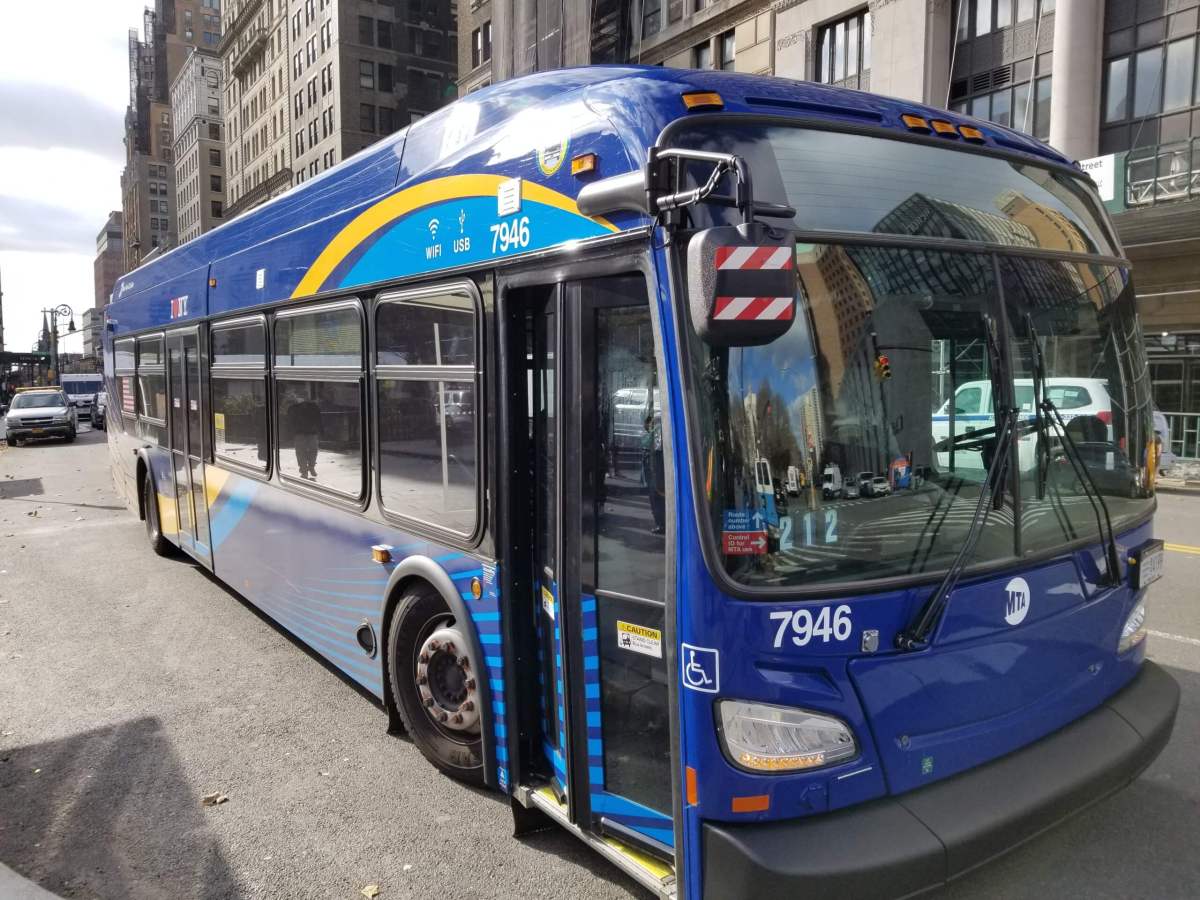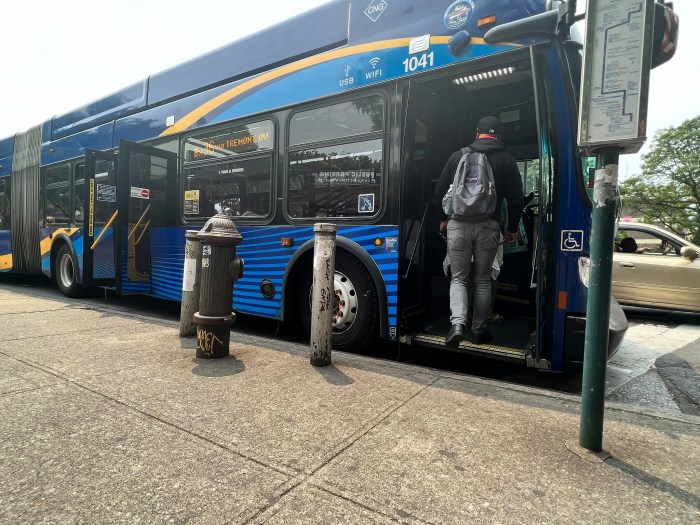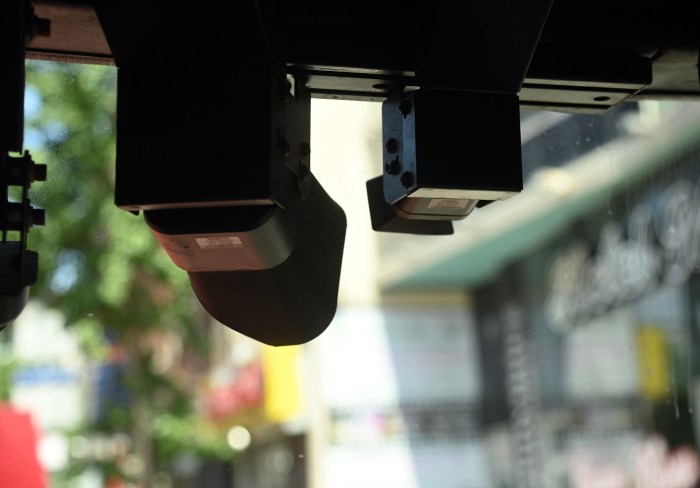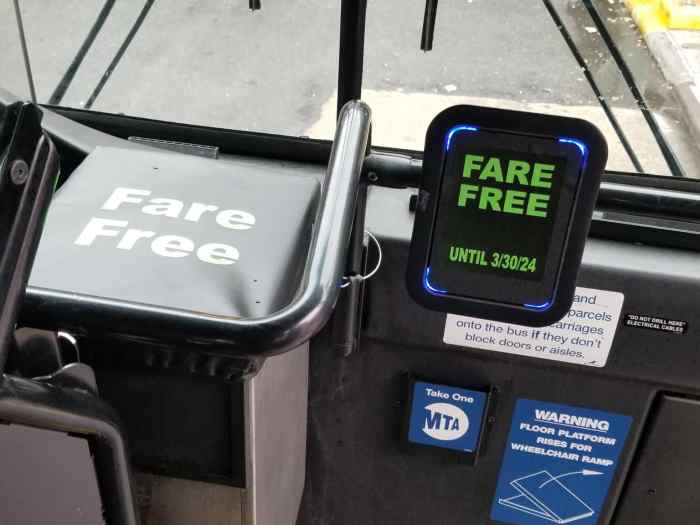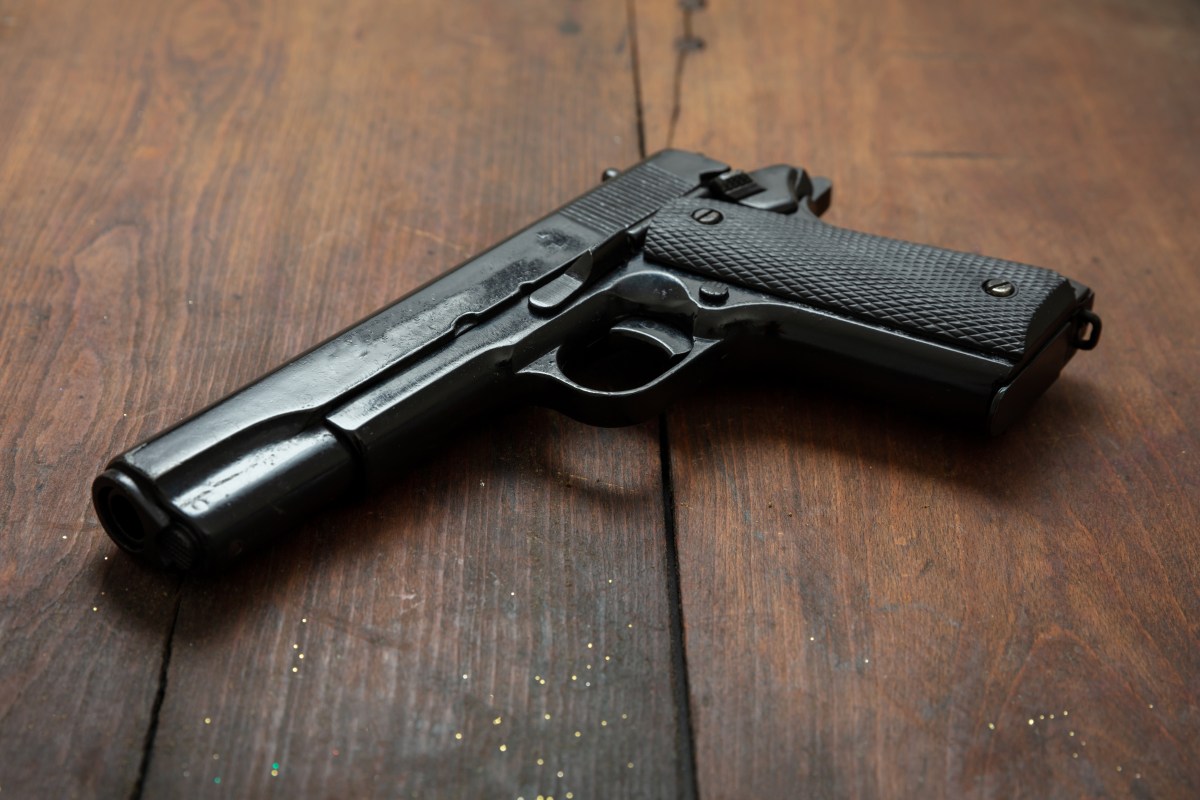The MTA is considering replacing side-view mirrors on its 6,000 city buses with digital cameras and screens, in the hope of cutting costs associated with collisions.
Switching to “e-mirrors” would save the MTA millions of dollars it would otherwise spend on repairs, New York City Transit president Rich Davey said at the agency’s monthly board meeting on Wednesday.
Davey said that mirrors account for about 25% of the collisions involving MTA buses, with about 1,800 incidents in 2022. The issue has become more pronounced with COVID-era changes to the roadway, especially with the plethora of outdoor dining structures that have gone up, he noted.
“An e-mirror is basically a back-up camera. It’s actually a video of the sides of the bus, if you will, and if you’ve noticed, our mirrors actually stick out a fair bit,” Davey said. “What we have found, particularly with the proliferation of dining structures in the city, our mirrors are just hitting more inanimate objects.”
All those mirror collisions cost the MTA a pretty penny in repairs as well as legal entanglements, he said, while also causing delays for riders.
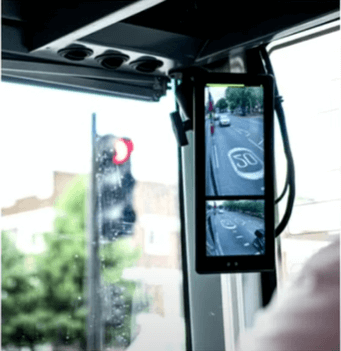
“The goal there is to try this technology out and then reduce our costs,” said Davey.
The digital mirrors could be rolled out on buses within weeks, Davey noted.
E-mirrors are just one idea the MTA is considering to reach $400 million in “efficiency” savings proposed by Governor Kathy Hochul in her executive budget in February. The state budget is now almost a month late, and exactly how the MTA will plug a $600 million deficit this year remains to be seen, but the agency is still marching ahead with the various efficiency savings regardless.
The MTA also intends to hike fares by 5.5% this year, though the schedule for that is becoming murkier with the uncertainty coming out of Albany. The ultimate fare hikes will be determined by an internal agency working group before being approved by the board, likely sometime this summer.
Other ideas to spend more efficiently include “predictive maintenance,” or using data analytics to fix problems before they become costly boondoggles, and replacing old diesel work trains with newer models that would require less maintenance on spending.
Read more: Transit Workers Call for Removal of TWU VP After Brawl



